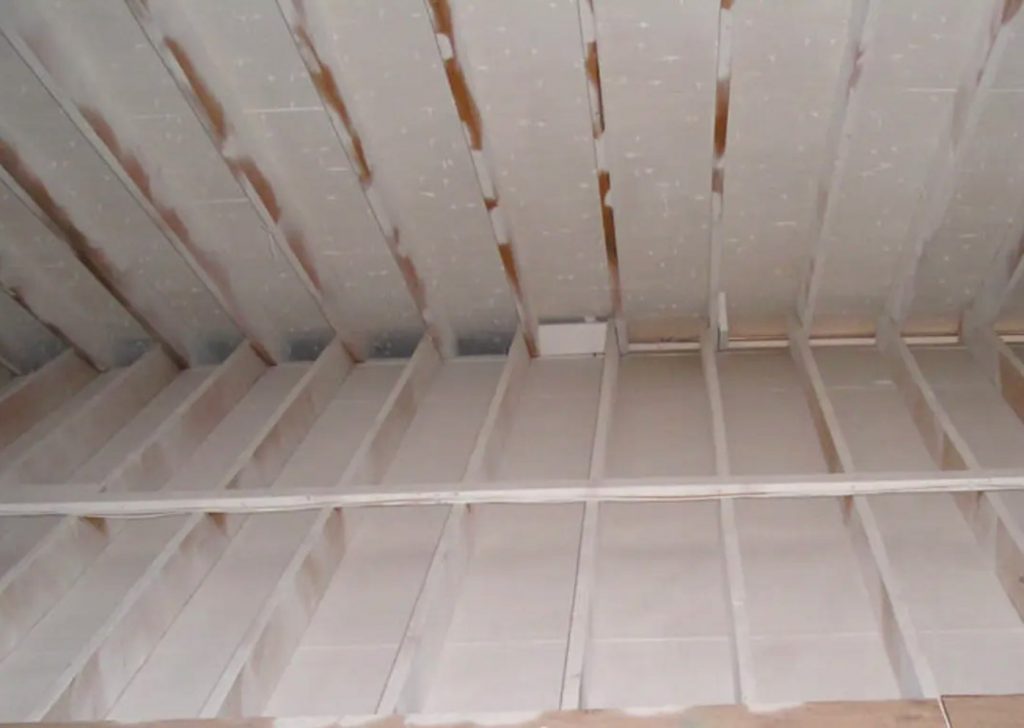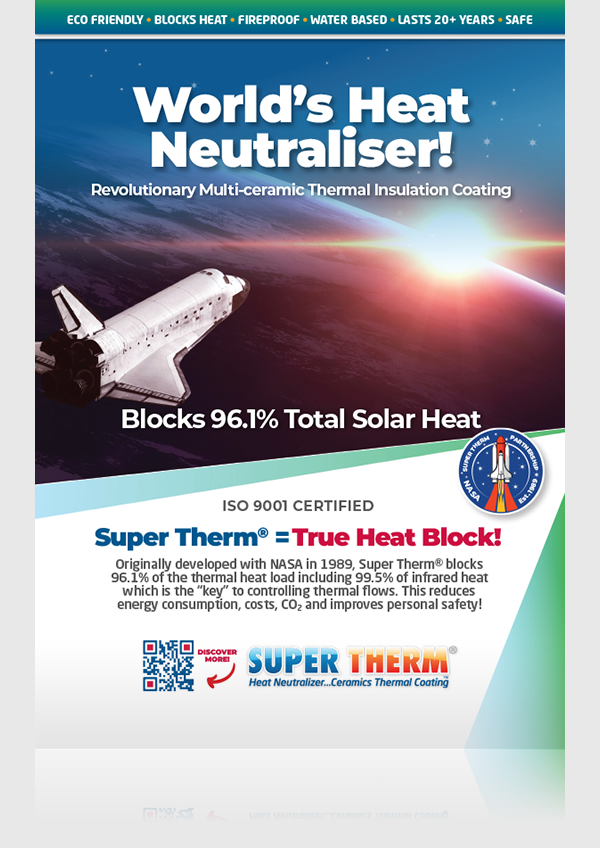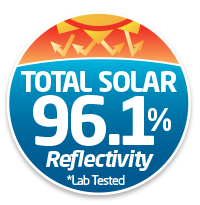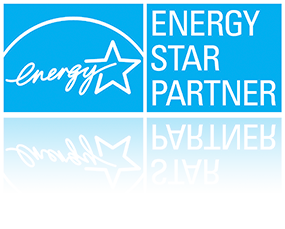An ‘Insulating’ Paint Salesman Is Tripped Up By His Own Product
Articles are published occasionally regarding the use of insulation, radiant barrier and heat reflective paints which create a mis-conception that all insulation coatings are bad…this simply isn’t the case! We’ve found that many of these articles are written not from facts but misjudgement.
While it is highly important we distinguish that Super Therm® is not like any other product on the marketplace, yet widespread and sweeping false comment damage great products and excellent solutions. You may notice the editor of this article is Martin Holladay, he’s got another article ‘Insulating’ Paint Merchants Dupe Gullible Homeowners‘ where he acknowledges “Since January 2002, when I was hired as editor of Energy Design Update, I have worked full time researching and reporting on energy issues. That is what I have “personally done.” So no testing with Super Therm but plenty of opinions about it.
We’d like to break this article down for you.
Green Building Advisor
Martin Holladay | July 8, 2011
https://www.greenbuildingadvisor.com/article/an-insulating-paint-salesman-is-tripped-up-by-his-own-product

Image Credit: Craig Marden
When Alton King built a new house, he didn’t include any insulation — instead, he trusted a ‘miracle’ product, ceramic paint.
…Although the claim that a coat of Super Therm paint is equivalent to R-19 insulation is clearly false, Alton King apparently believed it. In fact, King was such a believer in the insulating value of Super Therm that he decided to use the paint to insulate his own home.
There is no such thing as “insulating” paint, as I noted in an earlier blog. However, that fact hasn’t stopped paint dealers from promoting these worthless high-priced coatings to gullible customers.
One former distributor of “insulating” paint is Alton King of Longmeadow, Mass. After setting up a company called Energy & Conservation Management Inc., King became a distributor of Super Therm, a paint manufactured by Superior Products International. The manufacturer claims that Super Therm (also spelled “Supertherm”) has an “R-19 equivalent rating” and “provides the same protection as 6 inches of fiberglass.”
The manufacturer of Super Therm has been making outlandish claims for years. Back in March 2004, I wrote an article for Energy Design Update, “R-Value Scofflaws,” debunking a claim by Superior Products International that Super Therm “provides R-19 in 7 mil thickness.”
Although the claim that a coat of Super Therm paint is equivalent to R-19 insulation is clearly false, Alton King apparently believed it. In fact, King was such a believer in the insulating value of Super Therm that he decided to use the paint to insulate his own home.
Alton King builds his dream home
In January 2001, King hired Richard McCullough to build him a new 7,291-square-foot home at 49 Memery Lane in Longmeadow, Mass. After the house was completed, the town assessed the home at $1,060,300.
The builder hired a subcontractor, Paul Tetro of Dee Service, to design and install the home’s HVAC system. Tetro was given plans showing a house with conventional fiberglass insulation. After performing a Manual J calculation, Tetro designed a hydro-air heating system — that is, a system using a boiler that sends hot water to a heat-exchange coil in the air handler. Space heat is distributed through ductwork. The system included a natural gas boiler rated at 183,000 Btu/h (net).
On the REScheck form that he filed to obtain a building permit, the homeowner listed R-values that complied with the building code: R-19 for the walls and R-30 for the ceiling. Tetro used the R-values given to him by King to perform the Manual J. “When it went into design, it was designed with regular insulation,” Tetro told me. “It was only later, after the house was framed, that he decided to switch to the insulating paint.”
Using paint for insulation
Once the construction was well under way, in September 2003, King informed the builder (McCullough) that he didn’t want any insulation installed in the walls or attic. Instead, he wanted to use Super Therm paint. Although McCullough strongly advised against the idea, the homeowner insisted. McCullough said that he would only proceed with the plan if King signed a waiver absolving the builder from responsibility for any problems arising from the omission of insulation.
King directed workers to apply Super Therm paint to multiple surfaces: the underside of the roof sheathing, the roof rafters, the exposed ceiling joists in the attic, and both sides of the ceiling drywall facing the attic. The worthless paint was also applied to the interior side of the wall sheathing and the exterior side of the Sheetrock on the walls. King claimed that the Super Therm paint would provide an overall insulating value of more than R-19 for the walls and more than R-38 for the ceilings.
Since the stud bays and joist cavities of King’s home were empty, however, the actual R-value of his wall assembly was about R-2.9, while his ceilings had an R-value of only R-1.7.
Early signs of impending problems
King was so sure that his “insulating” paint was highly effective that he tried to obtain an Energy Star label for his new home. Following up on King’s request, Conservation Services Group sent out energy specialist Craig Marden, a rater for the Energy Star Homes program, in November 2003 to evaluate the house. (Craig Marden now works for Owens Corning.)
Marden told me, “He had sprayed the entire inside of the walls — the inside of the sheathing and the studs — with an off-white paint. He said, ‘This is a new paint that has a very high R-value, and I put two layers on the inside and two layers on the outside, so I have R-40.’ I told him, ‘This isn’t insulation,’ but he wouldn’t stop. I said, ‘What did the building inspector say?’ He said, ‘He signed off on it’ — evidently due to some convoluted documentation that the homeowner provided.”
Bruce Harley is the technical director for residential energy services at Conservation Services Group, and he remembers the case well. Harley said, “Craig Marden contacted me. He said, ‘This guy wants to build a house without insulation, just insulating paint. Does this make any sense?’ And I said no. We sent an e-mail to Mr. King, saying that we decline to certify this house as Energy Star. We also said that we expect him to have comfort problems because the house is not insulated properly.”
King’s next hurdle arose when the town’s building inspector — evidently regretting his earlier approval of the insulating paint scheme — refused to issue a certificate of occupancy. However, after King produced more obfuscatory documents from the manufacturer of Super Therm, purporting to prove that one coat of paint is equivalent to R-19, the inspector finally relented and issued a C.O.
What was he thinking?
In spite of repeated warnings that he was headed for trouble, King forged ahead. “He was unwilling to understand his folly because he was a distributor for Super Therm,” Harley told me.
Curt Freedman, an engineer who evaluated the heating system at King’s house, told me, “The gentleman is no dummy. Many people have told him that there is no such thing as insulating paint. I think he realizes that the product doesn’t perform, but he didn’t want to acknowledge he was wrong out of stubbornness.”
What’s it like to live in a house without insulation?
Soon after his new home was completed in June 2004, King moved in. Almost immediately, King began complaining of comfort problems. The temperature in the second-floor room was often above 90°F, even though the air-conditioner was running full tilt.
During the winter, the situation worsened. According to Associate Justice Robert Fields, who adjudicated the resulting lawsuit, “Believing the HVAC system responsible for the temperature problems, King contacted Dee. … After a multitude of complaints and repair requests, … Dee determined that the temperature problems in the home were not related to the HVAC system. Rather, Tetro informed King that the temperature problems were caused by inadequate insulation.”
At that point King contacted Curt Freedman, a mechanical engineer, and asked him to figure out why his house was so hard to heat and cool. Freedman later wrote, “During one of my site visits, with outside temperatures of 28ºF, temperatures in the home were noted only to be in the 48ºF to 60ºF range.”
Freedman told me, “I inspected his walls with an infrared gun. I was getting very irregular readings of the inside temperature of the wall surface, so I told him, ‘There is something terribly wrong here. Is your house insulated?’ It’s a big house. I went up to the attic, and I was astonished to look at all the joists with nothing in between them. There is nothing there. So I’m thinking, ‘What’s going on?’ The owner is boasting to me, talking about Super Therm. He said, ‘This is the warmest attic in Longmeadow.’ I told him, ‘There’s a reason for that — all the heat from your house is coming up here to your attic, because there is no insulation on your attic floor.’”
“After examining the entire system, Freedman evaluated the thermal insulation throughout the home,” wrote Justice Fields. “Based on his assessment, Freedman determined that the R-value of the Supertherm was essentially zero.” Freedman determined that the actual design heating load of the uninsulated house was 365,133 Btu/h, so it wasn’t any surprise that the 183,000 Btu/h boiler couldn’t keep up.
Freedman later wrote, “My report concluded that although some specific mechanical systems could be improved, the overwhelming and primary reason for the home being so cold was based simply on the fact that the original home has no effective insulation.”
King builds an addition
With his heating and cooling problems still unresolved, King decided to build an addition to his new home, increasing the size of his home from 7,291 square feet to 9,563 square feet.
This time, the town building department insisted that the walls and ceiling of the new addition had to include insulation. King complied, although he didn’t install any insulation in the older part of the house.
King decided to solve his comfort problem by installing a bigger boiler. “He installed a new 400,000 Btuh boiler, at a cost of over $100,000, even though he had previously submitted that the design heat load was 50,000 Btuh,” said Freedman. “The cost of the new HVAC system was much more than it would have cost to insulate the house.”
King goes to court
A disinterested observer might imagine that it was time for King to sue the manufacturer of Super Therm for false claims. But King had a different idea: he sued the HVAC contractor, alleging “breach of contract, breach of the implied covenant of good faith and fair dealing, breach of express warranty, and breach of implied warranty of habitability.” To support his lawsuit, King hired a consultant who alleged that the return grilles installed by the HVAC contractor, Dee Service, were too close to the supply registers, and that the ducts were undersized and leaky.
King’s lawsuit was heard by Associate Justice Robert Fields, presiding without a jury. Bruce Harley told me, “I took it on myself to write a letter that ended up being entered as evidence in the court case, explaining why this paint didn’t work. In that letter I quoted your earlier articles in EDU.” Harley, Marden, and Freedman were all called to the stand to testify. “The ducts were not particularly leaky,” said Harley. “Craig Marden had done a duct leakage test at one point, and he determined that the duct leakage level was typical of new construction. And the building shell was not particularly leaky either.”
Engineer Curt Freedman ended up testifying for the defendant — that is, the HVAC contractor. To demonstrate that Super Therm is ineffective at slowing heat flow, Freedman brought a modified beer cooler to court. The cooler included a 50-watt heater and a computer fan to maintain an evenly distributed temperature. “He had cut out a window in the foam box,” Harley recalled. “He had plugged the window with a film of dried paint. He peeled the dried paint off a paint roller tray. He didn’t try to make a quantitative measurement of the R-value of the paint. He just pointed an infrared scanner at the box and showed the difference in temperature between the outside of the insulated box and the window covered with dried paint film. It wasn’t an ASTM test, but the demonstration was valuable.”
Freedman helped convince the court that the HVAC contractor was not at fault. On June 8, 2011, the judge ruled in favor of the HVAC contractor. “Based on the evidence presented, I find it entirely plausible that had King’s house been insulated with traditional material, that a significant portion of the heat generated by the boiler and the cold air generated by the air conditioner would have remained in the home,” Justice Fields ruled. “Based on the foregoing, judgment shall enter in favor of the defendant, Dee Services, Inc.”
Paint can’t insulate
Of course, there is poetic justice to a story in which a distributor of “insulating” paint ends up shivering during the winter and sweating during the summer because of the ineffectiveness of his worthless paint. Unfortunately, an innocent HVAC contractor had to be dragged into court before this sad case was finally resolved.
Harley summed up, “The bottom line is, if somebody could come up with a product that can give you R-19 at 10 cents a square foot, everyone would be doing it.”
More Debunked Media

Responses
Superior Products International II, Inc. response:
J.E. explained the background of this article back in 2015 as follows:
“This deals with a guy in the NE that decided to use Super Therm® on the interior walls of his home without technical advice from us. The home owner (Alton King) brought in a consultant that said the HVAC (Heating, ventilation, and air conditioning) was not the correct size and demanded he adjust it. SPI was never in the middle of any of this but was being informed of the actions.
We told the home owner that going to court against the HVAC contractor and having a judge that, like everyone else in the US, only understands “what’s your R rating”, he would lose. When he went against the local code people, the fiberglass representative testified Super Therm® had no thickness and therefore could not have an “R” value. It went on anyway and the result was as expected. The judge said it had to have thickness to be insulation and case closed.
Response by Technical Director of SPI
Lloyd,
I am the Technical Director for Superior Products International II, Inc., the creator and maker of the Super Therm product. Doug Pearce in Canada or anyone else is not the manufacturer of this product.
You have a lot of incorrect information being spread here I would like to set straight.
In one blog prior, someone is referring to David Cross (which we have worked with) placing a torch to one end of a metal strip that had a thicker coat of Super Therm applied. We use a thicker coat since the torch end reaches 2000F. Obviously, a roof never sees this type of heat. What happens with the metal strip, is the Super Therm has the ability to emit the majority of the heat it absorbs from the metal strip to the ambient or cooler side. Specific ceramics have this ability for quick emmittance. (Thermal Emmittance .90) You will want to remember that this is wicking heat off the metal strip in a conductive or “direct contact” situation. In this case, Super Therm will tend to keep the metal cool. We would not use Super Therm in this situation if we wanted to keep the metal strip hot. That is not how Super Therm performs, though we do have other coatings developed for direct conduction.
Super Therm is highly effective on a roof where it can use it’s Reflective and Thermal Emmittence properties. On top of a roof or container, it proves a very high reflectivity using ceramic powders and non-conductors in specific shapes and densities to reflect up to 95% of Radiant Heat away from the roof while absorbing a very small amount of heat, then emits the majority of what “was” absorbed. (usually about 5%) We are so effective, our Japanese distributor (Daiko Shokai) has built their business over the last 18 years to over 70% of the reflective roof coating market in Japan.
Please keep in mind, all R-Values are based on R or Resistance values, or how long it takes a material to absorb, load with heat, and pass it directly through at the same hot temperature. The R-Value was designed for Fiberglass. Typically, most say Fiberglass works, but does it really? Or, is it simply an air bag supported by figerglass strands that totally heats and lays over the surface, hence “slowing down” the emmittance of heat from the surface? Though, if you smash the fiberglass batte flat (creating more density and removing the air) the batt will heat even faster and allow heat to flow easily through. So, does Fiberglass really block heat? No, it merely slows it down for a short time, then you face the same heat as before. This is why our attics heat up so in the summer, and why it takes most of the night running our air conditioners “after” the sun goes down. Super Therm on a roof or container can BLOCK the specific heat waves creating the incidental heat in roofing and substrates and reflect and emit them away into the surrounding ambient, keeping the roof surface cool.
You mentioned that you would like to have additional information regarding our product. You can contact me at the number below to receive a study done regarding Super Therm on shipping containers by an expert working in conjunction with the Florida Energy Office, as well as testing done by Vodafone, the largest mobile phone company in the world. Vodafone found that it will lower your electric cooling bill 52%.
I will be glad to send you test files via the web. Or preferably, you can also contact our representative who got our product spec’d in on the Redondo Beach house, John Grey. His contact number is 843-813-6402. He can give you all other information needed.
Again, please feel free to contact me. I will be glad to get the container and Vodaphone reports in your hands to review.
Thank you for your attention and interest.
Regards, Craig R. Smith
Technical Director
Superior Products International II, Inc.
913-962-4848
www.spicoatings.com
MIKE DEBUSK | Aug 12, 2014
supertherm coating
I HAVE USED AND SOLD RADIANT BARRIER COATINGS FOR AROUND 20 YEARS THE FIRST BEING ( HYDRO-THERM ) THAT WAS SOLD AS A HOUSE COATING ONLY. THEN LATER I WENT WITH A COATING CALLED –SUPERTHERM-MFG BY SUPERIOR PRODUCTS IN SALINAS KANSAS.BY J.E.PRITCHET —AFTER READING ALL THE NEGATIVE COMMENTS BY MARTIN HOLLADAY CONCERNING NO SUCH THING AS RADIANT COATINGSI FELT THE NEED TO ADD MY 2 CENTS–MY FIRST COMMENT BEING –I WORKED FOR A MAJOR CHEMICAL COMPANY THAT I SOLD THIS PRODUCT TO FOR ABOUT 10 YEARS WITH OUT A SINGLE COMPLAINT AS TO WHAT IT COULD DO..BEFORE THEY WOULD PURCHASE IT THE THEY WANTED TO TEST IT IN THE LAB AND AFTER ALL THE TESTING..THEY WERE SATISFIED THAT IT WOULD DO AS STATED AND IT ACTUALLY DID BETTER IN SOME CASES. NOW SOME OF THE ENGINEERS SAID IT WAS A WHITE ELEPHANT PRODUCT EVEN AFTER SEEING THE TEST RESULTS HUMM I GUESS THEY WERE WRONG..BECAUSE THEY DIDN’T FIRE ME AND I’V WORKED THERE FOR ANOTHER 6 YEARS THEN RETIRED..AND YES THERE STILL USING IT…I’M NO ENGINEER BUT THE FACT THAT ALL THE FEED BACK FROM THE PEOPLE AND COMPANY’S I SOLD IT TO RE ORDERED. THE ONE THING THAT I MIGHT ADD ABOUT THIS PRODUCT SUPERTHERM IS THAT JAPAN BOUGHT SOME AND TRIED TO DUPLICATE IT THEM SELVES BUT COULDN’T AND HAVE PURCHASED THOUSAND OF GALLONS OF IT TO USE—YES I GUESS YOU CAN BELIEVE WHAT MARTIN HOLLADAY HAS TO SAY ABOUT THE PRODUCT BUT I KNOW BETTER.BECAUSE I STILL USE IT, WITH GOOD RESULTS. AND YES IT DOES A BETTER JOB WHEN FACING THE HEAT SOURCE…HAVE A GREAT DAY
Q: Does Super Therm® have an R value?
Super Therm® is not designed as a conductive insulation so therefore does not have an R value. Insulation coatings are rating on BTUs. Super Therm’s BTU rating blocks 367 to 4 BTUs:
- Super Therm® is not promoted or sold based upon any claim about a R-value or a R-value equivalency.
- Super Therm® does not have a R-value and is not designed to be used to block conductive heat in the same manner as traditional fibreglass insulation. Super Therm® is not code-approved anywhere for use as an interior insulation or for use as an insulation having a R-value. It is to be used on external of buildings to block solar heat gain.
- Super Therm® is not designed to block conductive heat transfer; Super Therm® blocks radiational heat transfer (solar heat from the sun) when applied to the exterior of a building or other enclosure.
- The major benefit of using Super Therm® in building construction is to apply it on the exterior of the building (roof and side walls) to block solar radiation and to prevent solar heat from loading into the building envelope.
The value of the Super Therm used correctly
- Insulates and stops heat in its tracks leaving ambient – like a big shady tree
- Cooler at night in summer without air-conditioning – more comfortable
- 20 year Australia warranty with approved applicators
- Tested and reduces energy consumption by 20-50% (ROI generally 3 years or less)
- Protects the roof from thermal shock and corrosion
- Makes the space comfortable for humans and animals
- Eco friendly, certified and water based application
- Proven for over 30 years
- Tested world wide with over 10.3 million m2 coated in Japan
- NASA tested and rated the best for no fire spread or smoke



























